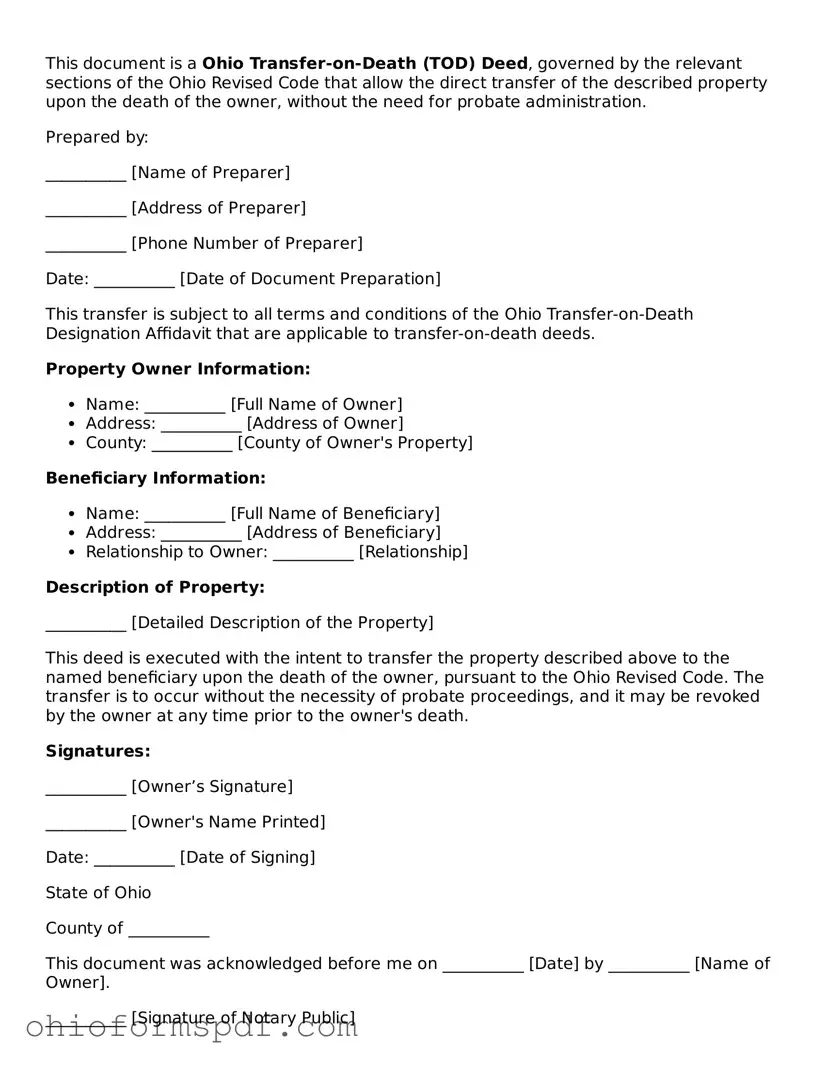This document is a Ohio Transfer-on-Death (TOD) Deed, governed by the relevant sections of the Ohio Revised Code that allow the direct transfer of the described property upon the death of the owner, without the need for probate administration.
Prepared by:
__________ [Name of Preparer]
__________ [Address of Preparer]
__________ [Phone Number of Preparer]
Date: __________ [Date of Document Preparation]
This transfer is subject to all terms and conditions of the Ohio Transfer-on-Death Designation Affidavit that are applicable to transfer-on-death deeds.
Property Owner Information:
- Name: __________ [Full Name of Owner]
- Address: __________ [Address of Owner]
- County: __________ [County of Owner's Property]
Beneficiary Information:
- Name: __________ [Full Name of Beneficiary]
- Address: __________ [Address of Beneficiary]
- Relationship to Owner: __________ [Relationship]
Description of Property:
__________ [Detailed Description of the Property]
This deed is executed with the intent to transfer the property described above to the named beneficiary upon the death of the owner, pursuant to the Ohio Revised Code. The transfer is to occur without the necessity of probate proceedings, and it may be revoked by the owner at any time prior to the owner's death.
Signatures:
__________ [Owner’s Signature]
__________ [Owner's Name Printed]
Date: __________ [Date of Signing]
State of Ohio
County of __________
This document was acknowledged before me on __________ [Date] by __________ [Name of Owner].
__________ [Signature of Notary Public]
__________ [Name of Notary Printed]
My Commission Expires: __________
After completing this document, the owner must file it with the recorder's office in the county where the property is located.
